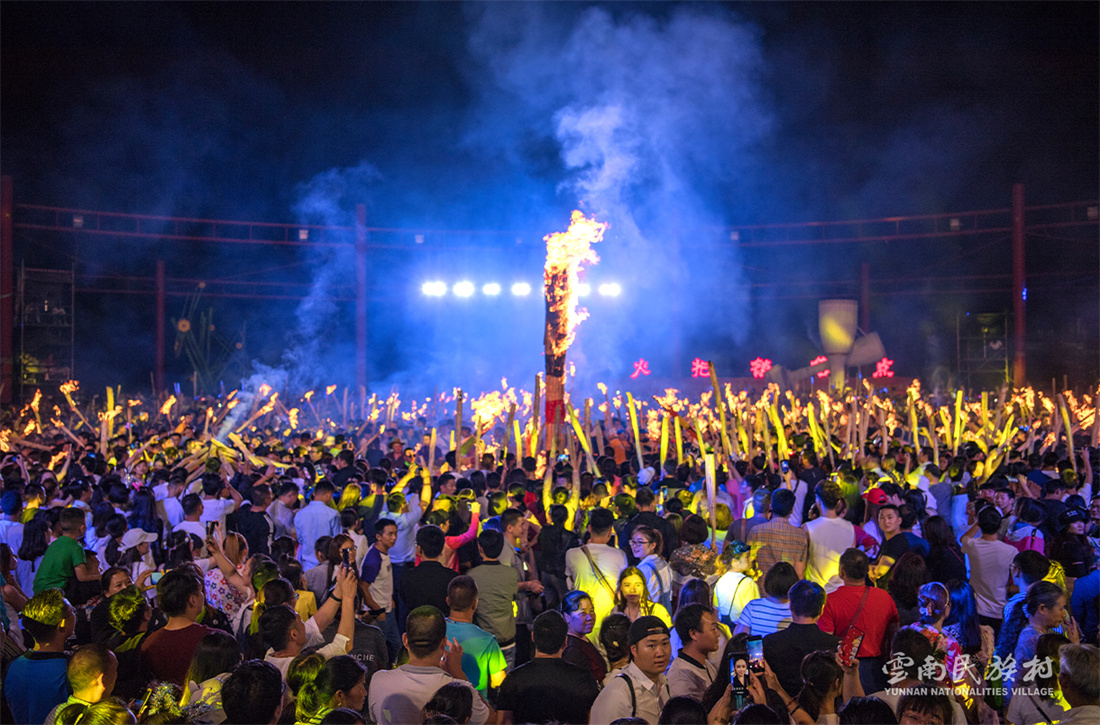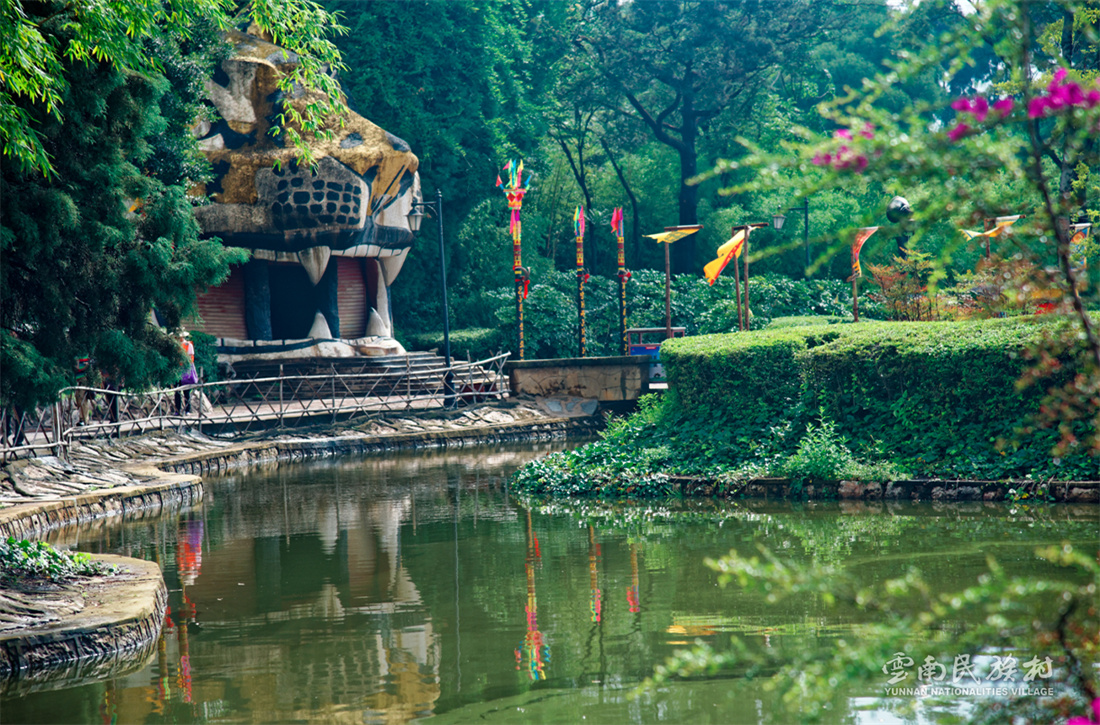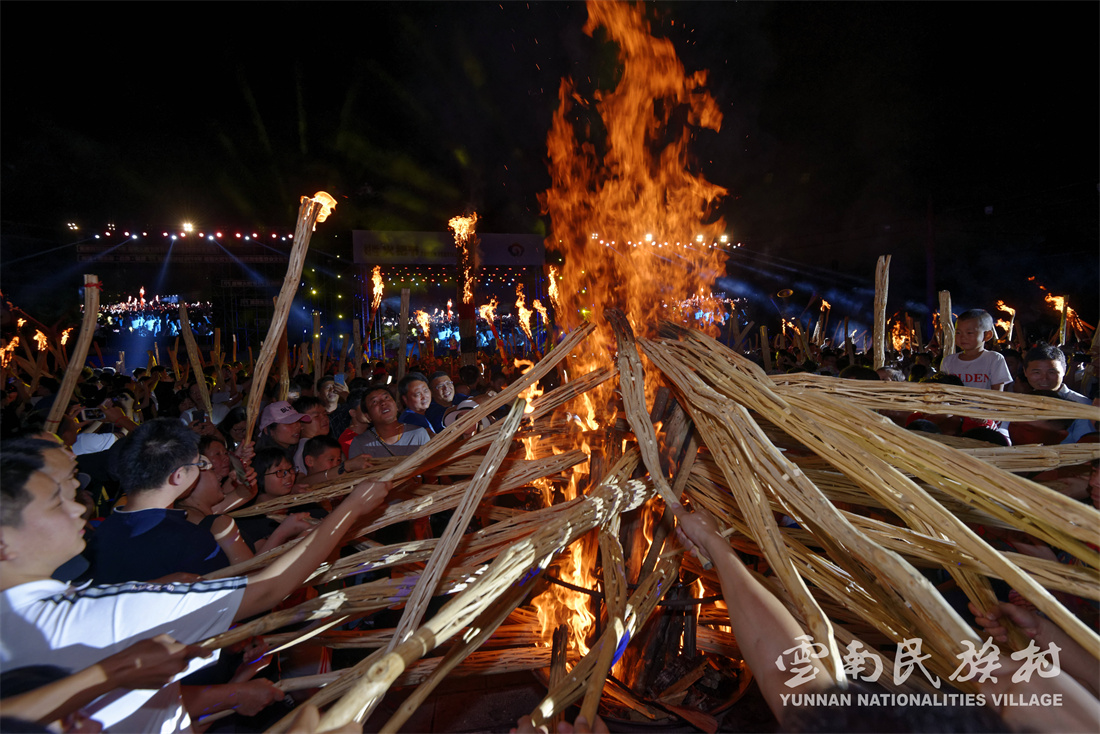Numbering 4.71 million, the Yi minority is Yunnan’s largest minority group in terms of population and areas of distribution. The Yi minority people of Yunnan Province mostly live in compact communities along the Jinsha River and Yuanjiang River reaches, or in the hinterland of the Ailao Mountain and Wuliang Mountain. A minority group keen on singing and dancing, the Yi people are extremely well-known for their dage, tiaoyue, dasanxian (large three-stringed guitar) and diejiao dances. The Torch Festival is the Yi minority’s biggest annual celebration that shows the most distinctive ethnic minority features.
The Yi Village is constructed on a land patch measuring over 50 acres, and major components of the village include the relief-sculpture wall showing three tigers and the tiger-head figure representing the Neizushi or founder of the Yi religion, all of which symbolize the “tiger- and eagle-worshiping culture” of the Yi minority people. The totem poles on the Solar Calendar Square are richly decorated with imageries of the sun, tiger, fire and the Eight Diagrams, around which are 10 moon-shaped sculptures that face different directions. On the outer circumference of the square are stone carvings of the Chinese Zodiac (12 animals which represent the 12 Earthly Branches, used to symbolize the year in which a person is born). Buildings constructed on the mountain slope include the tuzhang-style theater which is consisted of rammed earth walls and roof, local people’s houses, the tangguo house which is virtually a kitchen, the cloth-weaving and embroidering rooms and the headman’s compound, all of which fully portray the Yi people’s ecological concept of seeking harmonious coexistence with the nature. Other components of the Yi Village include the bullfighting ground, tea plantations, swings and other minority sport facilities.






